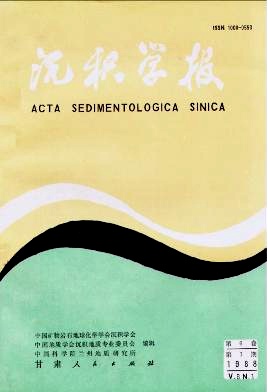GEOCHEMICAL CHARACTERISTICS OF THE ASPHALTENES IN THE SOLULE EXTRACT
- Received Date: 1986-04-03
- Publish Date: 1988-03-10
Abstract: This paper deals with the study on asphaltenes extractd by benzen-methyl alcohol from 11 source rocks from Huashen No 1 well of the Lower Xingmin Group (Cretaceous) in the Jinxi-Huahai basin, Northwest China. The relation between the porperties of the asphatenes and petroleum evolution is studied by elements analysis, infrared spectrum, electron spin resonance and nuclear magnetis resonamce. experiments 1. Method for preparing asphaltenes Source rocks are extracted by benzene-methyl alcohol (9:1) Asphaltenes are prepared in the standard way by two times of precipitation from the benzen-methyl alcohol extract with 10 parts of hexane. 2. Element analysis; Element analysis is performed on a ZWF-1-type element analyser and the percentages of are obtained. Then H/C atom rate and O/C atom rate are calclated. 3. Infrared spectrum: The analysis is made with the following method: Powder asphaltenes are prepared 0.25% bromine potassium piece Subsequent was scanned by the infrared spectrometer of IR-440 type. The result of infrared spectrum shows that the asphaltenes have the following fuctional group: the peaks at 2900 cm-1, 1380 cm-1, 2850 cm-1, 1450 cm-1 representing methyl and methylene respectively; and the peaks at 750cm-1, 810 cm-1, 860 cm-1, 1280 cm-1. 1620 cm-1. 3050 cm-1, reflecting aromatic hydrocarbon characteristic absorption peaks and the peaks at 1030 cm-1, 1650 cm-1, 1700 cm-1, 3400 cm-1, representing ether groups, quinone groups, carbonyl groups and NH group respectvel.y 4. Electron spin resonance: Powder asphaltenes are put in a glass tube with DPPH reference, then detected by the ESR-3 spectrometer at room temperature. Conclusion Based on the above data, the following ideas are conceived: 1) During oil formation the asphaltenes are the material of "interim type". Asphal-tene molecule consists of condensed nucleus benzen rings with alkylated side chain; 2) Properties of asphaltenes in structure are relatived to the types of the source materials. Organic parent materials in Huashen No 1 well belong to a mixture type which mainly contains humic substance. 3) The asphaltenes are heavy components of the soluble extract. The stages are observed from soure rocks in Hnashen No 1 well. The depth of 1357m-1768m is the lower mature stage while 1800m-2700m is the higher mature stage. The maximal threshold of the formation of crude oil is 1800m in Huashen No 1 well of the Huahai Basin.
| Citation: | He YueYing. GEOCHEMICAL CHARACTERISTICS OF THE ASPHALTENES IN THE SOLULE EXTRACT[J]. Acta Sedimentologica Sinica, 1988, 6(1): 118-127. |






 DownLoad:
DownLoad: